Taj Mahal
From Wikipedia, the free encyclopedia
For other uses, see Taj Mahal (disambiguation).
| Taj Mahal ताजमहल | |
|---|---|
 | |
| Location | Agra, Uttar Pradesh, India |
| Coordinates | 27°10′30″N78°02′31″ECoordinates: 27°10′30″N 78°02′31″E |
| Height | 73 metres (240 ft) |
| Built | 1632–53[1] |
| Architect | Ustad Ahmad Lahauri |
| Architectural style(s) | Mughal architecture |
| Visitors | 7–8 million[2] (in 2014) |
| Type | Cultural |
| Criteria | (i) |
| Designated | 1983 (7th session) |
| Reference no. | 252 |
| State Party | India |
| Region | Asia-Pacific |
The Taj Mahal (/ˌtɑːdʒ məˈhɑːl/, more often /ˈtɑːʒ/;[3] Persian for Crown of Palaces[4]) is an ivory-white marble mausoleum on the south bank of the Yamuna river in the Indian city of Agra. It was commissioned in 1632 by the Mughal emperor, Shah Jahan (reigned 1628–1658), to house the tomb of his favourite wife, Mumtaz Mahal. The tomb is the centrepiece of a complex nearly 17 hectares (42 acres) in area,[5] which includes amosque and a guest house, and is set in formal gardens bounded on three sides by a crenellated wall.
Construction of the mausoleum was essentially completed in 1643 but work continued on other phases of the project for another 10 years. The Taj Mahal complex is believed to have been completed in its entirety in 1653 at a cost estimated at the time to be around 32 million rupees, which in 2015 would be approximately 52.8 billion rupees (US$827 million). The construction project employed some 20,000 artisans under the guidance of a board of architects led by the court architect to the emperor, Ustad Ahmad Lahauri.
The Taj Mahal was designated as a UNESCO World Heritage Site in 1983 for being "the jewel of Muslim art in India and one of the universally admired masterpieces of the world's heritage". Described by Nobel laureate Rabindranath Tagore as "the tear-drop on the cheek of time", it is regarded by many as the best example of Mughal architecture and a symbol of India's rich history. The Taj Mahal attracts 7–8 million visitors a year. In 2007, it was declared a winner of the New7Wonders of the World (2000–2007) initiative.
Contents
[hide]Inspiration
The Taj Mahal was commissioned by Shah Jahan in 1631, to be built in the memory of his wife Mumtaz Mahal, a Persian princess who died giving birth to their 14th child, Gauhara Begum.[6] Construction of the Taj Mahal began in 1632.[7] The imperial court documenting Shah Jahan's grief after the death of Mumtaz Mahal illustrate the love story held as the inspiration for Taj Mahal.[8][9] The principal mausoleum was completed in 1643[7] and the surrounding buildings and garden were finished about five years later.[citation needed]
Architecture and design
Main article: Origins and architecture of the Taj Mahal
The Taj Mahal incorporates and expands on design traditions of Persian and earlier Mughal architecture. Specific inspiration came from successful Timurid and Mughal buildings including; the Gur-e Amir (the tomb of Timur, progenitor of the Mughal dynasty, in Samarkand),[10] Humayun's Tomb, Itmad-Ud-Daulah's Tomb (sometimes called the Baby Taj), and Shah Jahan's ownJama Masjid in Delhi. While earlier Mughal buildings were primarily constructed of red sandstone, Shah Jahan promoted the use of white marble inlaid with semi-precious stones. Buildings under his patronage reached new levels of refinement.[11]
Tomb
The tomb is the central focus of the entire complex of the Taj Mahal. It is a large, white marble structure standing on a square plinth and consists of a symmetrical building with an iwan (an arch-shaped doorway) topped by a large dome and finial. Like most Mughal tombs, the basic elements are Persian in origin.[12]
The base structure is a large multi-chambered cube with chamfered corners forming an unequal eight-sided structure that is approximately 55 metres (180 ft) on each of the four long sides. Each side of the iwan is framed with a huge pishtaq or vaulted archway with two similarly shaped arched balconies stacked on either side. This motif of stacked pishtaqs is replicated on the chamfered corner areas, making the design completely symmetrical on all sides of the building. Four minarets frame the tomb, one at each corner of the plinth facing the chamfered corners. The main chamber houses the false sarcophagi of Mumtaz Mahal and Shah Jahan; the actual graves are at a lower level.[13]
| The tomb | ||||||||||||
|---|---|---|---|---|---|---|---|---|---|---|---|---|
|
The most spectacular feature is the marble dome that surmounts the tomb. The dome is nearly 35 metres (115 ft) high which is close in measurement to the length of the base, and accentuated by the cylindrical "drum" it sits on which is approximately 7 metres (23 ft) high. Because of its shape, the dome is often called an onion dome or amrud (guava dome).[14] The top is decorated with a lotus design which also serves to accentuate its height. The shape of the dome is emphasised by four smaller domed chattris (kiosks) placed at its corners, which replicate the onion shape of the main dome. The dome is slightly asymmetrical.[15] Their columned bases open through the roof of the tomb and provide light to the interior. Tall decorative spires (guldastas) extend from edges of base walls, and provide visual emphasis to the height of the dome. The lotus motif is repeated on both the chattris and guldastas. The dome and chattris are topped by a gilded finial which mixes traditional Persian and Hindustani decorative elements.
The main finial was originally made of gold but was replaced by a copy made of gilded bronze in the early 19th century. This feature provides a clear example of integration of traditional Persian and Hindu decorative elements.[16] The finial is topped by a moon, a typical Islamic motif whose horns point heavenward.[17]
The minarets, which are each more than 40 metres (130 ft) tall, display the designer's penchant for symmetry. They were designed as working minarets—a traditional element of mosques, used by the muezzin to call the Islamic faithful to prayer. Each minaret is effectively divided into three equal parts by two working balconies that ring the tower. At the top of the tower is a final balcony surmounted by a chattri that mirrors the design of those on the tomb. The chattris all share the same decorative elements of a lotus design topped by a gilded finial. The minarets were constructed slightly outside of the plinth so that in the event of collapse, a typical occurrence with many tall constructions of the period, the material from the towers would tend to fall away from the tomb.
Exterior decorations
The exterior decorations of the Taj Mahal are among the finest in Mughal architecture. As the surface area changes, the decorations are refined proportionally. The decorative elements were created by applying paint, stucco, stone inlays or carvings. In line with the Islamic prohibition against the use of anthropomorphic forms, the decorative elements can be grouped into either calligraphy, abstract forms or vegetative motifs. Throughout the complex are passages from the Qur'an that comprise some of the decorative elements. Recent scholarship suggests that the passages were chosen by Amanat Khan.[18][19]
The calligraphy on the Great Gate reads "O Soul, thou art at rest. Return to the Lord at peace with Him, and He at peace with you."[19] The calligraphy was created in 1609 by a calligrapher named Abdul Haq. Shah Jahan conferred the title of "Amanat Khan" upon him as a reward for his "dazzling virtuosity".[20] Near the lines from the Qur'an at the base of the interior dome is the inscription, "Written by the insignificant being, Amanat Khan Shirazi."[21] Much of the calligraphy is composed of florid thuluth script made of jasper or black marble[20] inlaid in white marble panels. Higher panels are written in slightly larger script to reduce the skewing effect when viewed from below. The calligraphy found on the marble cenotaphs in the tomb is particularly detailed and delicate.
Abstract forms are used throughout, especially in the plinth, minarets, gateway, mosque, jawab and, to a lesser extent, on the surfaces of the tomb. The domes and vaults of the sandstone buildings are worked with tracery of incised painting to create elaborate geometric forms. Herringbone inlays define the space between many of the adjoining elements. White inlays are used in sandstone buildings, and dark or black inlays on the white marbles. Mortared areas of the marble buildings have been stained or painted in a contrasting colour which creates a complex array of geometric patterns. Floors and walkways use contrasting tiles or blocks in tessellation patterns.
On the lower walls of the tomb are white marble dados sculpted with realistic bas relief depictions of flowers and vines. The marble has been polished to emphasise the exquisite detailing of the carvings. The dado frames and archway spandrels have been decorated with pietra dura inlays of highly stylised, almost geometric vines, flowers and fruits. The inlay stones are of yellow marble, jasper and jade, polished and levelled to the surface of the walls.[20]
| Detailed exterior design | ||||||
|---|---|---|---|---|---|---|
|
|
Interior decoration
The interior chamber of the Taj Mahal reaches far beyond traditional decorative elements. The inlay work is not pietra dura, but a lapidary of precious and semiprecious gemstones.[22] The inner chamber is an octagon with the design allowing for entry from each face, although only the door facing the garden to the south is used. The interior walls are about 25 metres (82 ft) high and are topped by a "false" interior dome decorated with a sun motif. Eight pishtaq arches define the space at ground level and, as with the exterior, each lower pishtaq is crowned by a second pishtaq about midway up the wall.[23] The four central upper arches form balconies or viewing areas, and each balcony's exterior window has an intricate screen or jali cut from marble. In addition to the light from the balcony screens, light enters through roof openings covered by chattris at the corners. The octagonal marble screen or jali bordering the cenotaphs is made from eight marble panels carved through with intricate pierce work. The remaining surfaces are inlaid in delicate detail with semi-precious stones forming twining vines, fruits and flowers. Each chamber wall is highly decorated with dado bas-relief, intricate lapidary inlay and refined calligraphy panels which reflect, in miniature detail, the design elements seen throughout the exterior of the complex.[24]
| Detailed interior design | ||||||
|---|---|---|---|---|---|---|
|
|
Muslim tradition forbids elaborate decoration of graves. Hence, the bodies of Mumtaz and Shah Jahan were put in a relatively plain crypt beneath the inner chamber with their faces turned right, towards Mecca. Mumtaz Mahal's cenotaph is placed at the precise centre of the inner chamber on a rectangular marble base of 1.5 by 2.5 metres (4 ft 11 in by 8 ft 2 in). Both the base and casket are elaborately inlaid with precious and semiprecious gems. Calligraphic inscriptions on the casket identify and praise Mumtaz. On the lid of the casket is a raised rectangular lozenge meant to suggest a writing tablet. Shah Jahan's cenotaph is beside Mumtaz's to the western side, and is the only visible asymmetric element in the entire complex. His cenotaph is bigger than his wife's, but reflects the same elements: a larger casket on a slightly taller base precisely decorated with lapidary and calligraphy that identifies him. On the lid of the casket is a traditional sculpture of a small pen box.[23]
The pen box and writing tablet are traditional Mughal funerary icons decorating the caskets of men and women respectively. The Ninety Nine Names of God are calligraphic inscriptions on the sides of the actual tomb of Mumtaz Mahal. Other inscriptions inside the crypt include, "O Noble, O Magnificent, O Majestic, O Unique, O Eternal, O Glorious... ". The tomb of Shah Jahan bears a calligraphic inscription that reads; "He travelled from this world to the banquet-hall of Eternity on the night of the twenty-sixth of the month of Rajab, in the year 1076 Hijri."[25]
Garden
The complex is set around a large 300-metre (980 ft) square charbagh or Mughal garden. The garden uses raised pathways that divide each of the four quarters of the garden into 16 sunken parterres or flowerbeds. Halfway between the tomb and gateway in the centre of the garden is a raised marble water tank with a reflecting pool positioned on a north-south axis to reflect the image of the mausoleum. The raised marble water tank is calledal Hawd al-Kawthar in reference to the "Tank of Abundance" promised to Muhammad.[26]
Elsewhere, the garden is laid out with avenues of trees and fountains. The charbagh garden, a design inspired by Persian gardens, was introduced to India by Babur, the first Mughal emperor. It symbolises the four flowing rivers of Jannah (Paradise) and reflects the Paradise garden derived from the Persian paridaeza, meaning 'walled garden'. In mystic Islamic texts of the Mughal period, Paradise is described as an ideal garden of abundance with four rivers flowing from a central spring or mountain, separating the garden into north, west, south and east.
Most Mughal charbaghs are rectangular with a tomb or pavilion in the centre. The Taj Mahal garden is unusual in that the main element, the tomb, is located at the end of the garden. With the discovery of Mahtab Bagh or "Moonlight Garden" on the other side of the Yamuna, the interpretation of the Archaeological Survey of India is that the Yamuna river itself was incorporated into the garden's design and was meant to be seen as one of the rivers of Paradise.[27] Similarities in layout and architectural features with the Shalimar Gardens suggests both gardens may have been designed by the same architect, Ali Mardan.[28] Early accounts of the garden describe its profusion of vegetation, including abundant roses, daffodils, and fruit trees.[29] As the Mughal Empire declined, the Taj Mahal and its gardens also declined. By the end of the 19th century, the British Empire controlled more than three-fifths of India,[30] and assumed management of the Taj Mahal. They changed the landscaping to their liking which more closely resembled the formal lawns of London.[31]
Outlying buildings
The Taj Mahal complex is bordered on three sides by crenellated red sandstone walls; the side facing the river is open. Outside the walls are several additional mausoleums, including those of Shah Jahan's other wives, and a larger tomb for Mumtaz's favourite servant.[32]
The main gateway (darwaza) is a monumental structure built primarily of marble, and reminiscent of the Mughal architecture of earlier emperors. Its archways mirror the shape of the tomb's archways, and its pishtaq arches incorporate the calligraphy that decorates the tomb. The vaulted ceilings and walls have elaborate geometric designs like those found in the other sandstone buildings in the complex.[33]
At the far end of the complex are two grand red sandstone buildings that mirror each other, and face the sides of the tomb. The backs of the buildings parallel the western and eastern walls. The western building is a mosque and the other is the jawab (answer), thought to have been constructed for architectural balance although it may have been used as a guesthouse. Distinctions between the two buildings include the jawab's lack of a mihrab (a niche in a mosque's wall facing Mecca), and its floors of geometric design whereas the floor of the mosque is laid with outlines of 569 prayer rugs in black marble. The mosque's basic design of a long hall surmounted by three domes is similar to others built by Shah Jahan, particularly the Masjid-i Jahān-Numā, or Jama Masjid, Delhi. The Mughal mosques of this period divide the sanctuary hall into three areas comprising a main sanctuary and slightly smaller sanctuaries on either side. At the Taj Mahal, each sanctuary opens onto an expansive vaulting dome. The outlying buildings were completed in 1643.[citation needed]
Construction
The Taj Mahal is built on a parcel of land to the south of the walled city of Agra. Shah Jahan presented Maharajah Jai Singh with a large palace in the centre of Agra in exchange for the land.[34] An area of roughly 1.2 hectares (3 acres) was excavated, filled with dirt to reduce seepage, and levelled at 50 metres (160 ft) above riverbank. In the tomb area, wells were dug and filled with stone and rubble to form the footings of the tomb. Instead of lashed bamboo, workmen constructed a colossal brick scaffold that mirrored the tomb. The scaffold was so enormous that foremen estimated it would take years to dismantle.[35]
The Taj Mahal was constructed using materials from all over India and Asia. It is believed over 1,000 elephants were used to transport building materials. The translucent white marble was brought from Makrana, Rajasthan, the jasper from Punjab, jade and crystal from China. The turquoise was from Tibet and the Lapis lazuli from Afghanistan, while the sapphire came from Sri Lanka and the carnelian from Arabia. In all, twenty-eight types of precious and semi-precious stones were inlaid into the white marble.
According to the legend, Shah Jahan decreed that anyone could keep the bricks taken from the scaffold, and thus it was dismantled by peasants overnight. A 15-kilometre (9.3 mi) tamped-earth ramp was built to transport marble and materials to the construction site and teams of twenty or thirty oxen pulled the blocks on specially constructed wagons.[36] An elaborate post-and-beam pulley system was used to raise the blocks into desired position. Water was drawn from the river by a series of purs, an animal-powered rope and bucket mechanism, into a large storage tank and raised to a large distribution tank. It was passed into three subsidiary tanks, from which it was piped to the complex.
The plinth and tomb took roughly 12 years to complete. The remaining parts of the complex took an additional 10 years and were completed in order of minarets, mosque and jawab, and gateway. Since the complex was built in stages, discrepancies exist in completion dates due to differing opinions on "completion". Construction of the mausoleum itself was essentially completed by 1643[7] while work continued on the outlying buildings. Estimates of the cost of construction vary due to difficulties in estimating costs across time. The total cost has been estimated to be about 32 million Indian rupees,[7] which is around 52.8 billion Indian rupees ($827 million US) based on 2015 values.[37]
Later days
Abdul Hamid Lahauri in his book Badshahnama refers to Taj Mahal as rauza-i munawwara, meaning the illumined or illustrious tomb.[38] Soon after the Taj Mahal's completion, Shah Jahan was deposed by his son Aurangzeb and put under house arrest at nearby Agra Fort. Upon Shah Jahan's death, Aurangzeb buried him in the mausoleum next to his wife.[39] In the 18th century, the Jat rulers of Bharatpur invaded Agra and attacked the Taj Mahal, the two chandeliers, one of agate and another of silver, which were hung over the main cenotaph, were taken away by them, along with the gold and silver screen. Kanbo, a Mughal historian, said the gold shield which covered the 4.6-metre-high (15 ft) finial at the top of the main dome was also removed during the Jat despoliation.[40]
By the late 19th century, parts of the buildings had fallen into disrepair. During the time of the Indian rebellion of 1857, the Taj Mahal was defaced by British soldiers and government officials, who chiselled out precious stones and lapis lazuli from its walls. At the end of the 19th century, British viceroy Lord Curzon ordered a sweeping restoration project, which was completed in 1908.[41][42] He also commissioned the large lamp in the interior chamber, modelled after one in a Cairo mosque. During this time the garden was remodelled with British-style lawns that are still in place today.[31]
Threats
In 1942, the government erected a scaffolding to disguise the building in anticipation of air attacks by the Japanese Air Force.[43][44] During the India-Pakistan wars of 1965 and 1971, scaffoldings were again erected to mislead bomber pilots.[45]
More recent threats have come from environmental pollution on the banks of Yamuna River including acid rain[46] due to the Mathura Oil Refinery,[47]which was opposed by Supreme Court of India directives.[48] The pollution has been turning the Taj Mahal yellow. To help control the pollution, the Indian government has set up the Taj Trapezium Zone (TTZ), a 10,400-square-kilometre (4,000 sq mi) area around the monument where strict emissions standards are in place.[49]
Concerns for the tomb's structural integrity have recently been raised because of a decline in the groundwater level in the Yamuna river basin which is falling at a rate of around 1.5 m (5 ft) per year. In 2010, cracks appeared in parts of the tomb, and the minarets which surround the monument were showing signs of tilting, as the wooden foundation of the tomb may be rotting due to lack of water. Although it has been pointed out by politicians, that the minarets are designed to tilt slightly outwards, to prevent them crashing on top of the tomb in the event of an earthquake. In 2011, it was reported that some predictions indicated that the tomb could collapse within 5 years.[50][51]
Tourism
The Taj Mahal attracts a large number of tourists. UNESCO documented more than 2 million visitors in 2001,[52] which had increased to about 7–8 million in 2014.[2] A two-tier pricing system is in place, with a significantly lower entrance fee for Indian citizens and a more expensive one for foreigners. Most tourists visit in the cooler months of October, November and February. Polluting traffic is not allowed near the complex and tourists must either walk from parking lots or catch an electric bus. The Khawasspuras (northern courtyards) are currently being restored for use as a new visitor centre.[53][54]
The small town to the south of the Taj, known as Taj Ganji or Mumtazabad, was originally constructed with caravanserais, bazaars and markets to serve the needs of visitors and workmen.[55] Lists of recommended travel destinations often feature the Taj Mahal, which also appears in several listings of seven wonders of the modern world, including the recently announced New Seven Wonders of the World, a recent poll with 100 million votes.[56]
The grounds are open from 06:00 to 19:00 weekdays, except for Friday when the complex is open for prayers at the mosque between 12:00 and 14:00. The complex is open for night viewing on the day of the full moon and two days before and after,[57] excluding Fridays and the month of Ramadan. For security reasons[58] only five items—water in transparent bottles, small video cameras, still cameras, mobile phones and small ladies' purses—are allowed inside the Taj Mahal.[59]
Myths
Ever since its construction, the building has been the source of an admiration transcending culture and geography, and so personal and emotional responses have consistently eclipsed scholastic appraisals of the monument.[60] A longstanding myth holds that Shah Jahan planned a mausoleum to be built in black marble as a Black Taj Mahal across the Yamuna river.[61] The idea originates from fanciful writings of Jean-Baptiste Tavernier, a European traveller who visited Agra in 1665. It was suggested that Shah Jahan was overthrown by his son Aurangzeb before it could be built. Ruins of blackened marble across the river in Moonlight Garden, Mahtab Bagh, seemed to support this legend. However, excavations carried out in the 1990s found that they were discoloured white stones that had turned black.[62] A more credible theory for the origins of the black mausoleum was demonstrated in 2006 by archaeologists who reconstructed part of the pool in the Moonlight Garden. A dark reflection of the white mausoleum could clearly be seen, befitting Shah Jahan's obsession with symmetry and the positioning of the pool itself.[63]
No evidence exists for claims that describe, often in horrific detail, the deaths, dismemberments and mutilations which Shah Jahan supposedly inflicted on various architects and craftsmen associated with the tomb. Some stories claim that those involved in construction signed contracts committing themselves to have no part in any similar design. Similar claims are made for many famous buildings.[64] No evidence exists for claims that Lord William Bentinck, governor-general of India in the 1830s, supposedly planned to demolish the Taj Mahal and auction off the marble. Bentinck's biographer John Rosselli says that the story arose from Bentinck's fund-raising sale of discarded marble from Agra Fort.[65]
Another myth suggests that beating the silhouette of the finial will cause water to come forth. To this day, officials find broken bangles surrounding the silhouette.[66]
In 2000, India's Supreme Court dismissed P. N. Oak's petition[67] to declare that a Hindu king built the Taj Mahal.[64][68] In 2005 a similar petition was dismissed by the Allahabad High Court. This case was brought by Amar Nath Mishra, a social worker and preacher who says that the Taj Mahal was built by the Hindu King Parmar Dev in 1196.[69]
Views of the Taj Mahal
| Taj Mahal | ||||||
|---|---|---|---|---|---|---|
|
See also
- Architecture of India
- Mehtab Bagh, a garden directly across the river from Taj Mahal
- Fatehpur Sikri, a nearby city and World Heritage Site
- Bibi Ka Maqbara, a similar building in the Deccan
- Taj Mahal replicas and derivatives
- Inside, a 1968 new-age music album recorded in the building
References
Notes
- ^ Dutemple, Lesley A (2003). The Taj Mahal. Lerner Publications Co. p. 32. ISBN 0-8225-4694-9. Retrieved2015-02-07.
- ^ a b "Archaeological Survey of India Agra working on compiling visual archives on Taj Mahal". The Economic Times. 29 November 2015. Retrieved 16 January 2016.
- ^ Wells, John C. (1990). Longman pronunciation dictionary. Harlow, England: Longman. p. 704. ISBN 0-582-05383-8.entry "Taj Mahal".
- ^ Pictorial History of the World. C.S. Hammond & Company. 1962. p. 301.
THE TAJ MAHAL, (Persian for Crown of Palaces) was built by Shah Jehan in memory of his wife Mumtaz-i-Mahal.
- ^ "UNESCO Taj Mahal". UNESCO Culture World Heritage Centre, World Heritage List. UNESCO. 2016. Retrieved10 September 2016.
- ^ "Public Broadcasting Service". PBS. Retrieved2015-02-07.
- ^ a b c d Sarkar, Jadunath (Sir) (1919). "Studies in Mughal India". archive.org. Calcutta M.C. Sarkar. pp. 30, 31. Retrieved 2015-05-20.
- ^ Muhammad Abdullah Chaghtai Le Tadj Mahal D'Agra (Hindi). Histoire et description (Brussels) 1938 p. 46.
- ^ 'Abd al-Hamid Lahawri Badshah Namah Ed. Maulawis Kabir al-Din Ahmad and 'Abd al-Rahim under the superintendence of William Nassau Lees. Vol. I Calcutta 1867 pp. 384-9 ; Muhammad Salih Kambo Amal-i-Sal\lih or Shah Jahan NamahEd. Ghulam Yazdani Vol.I (Calcutta) 1923 p. 275.
- ^ Chaghtai Le Tadj Mahal p. 146.
- ^ Copplestone, p. 166.
- ^ "Taj Mahal Mausoleum from Britannica". RetrievedMarch 4, 2015.
- ^ "ASI". Retrieved March 4, 2015.
- ^ "Onion domes, bulbous domes". strombergarchitectural.com. Retrieved March 4, 2015.
- ^ Ahuja, Dilip R.; Rajani, M.B. (2016). "On the symmetry of the central dome of the Taj Mahal" (PDF). Current Science.110 (6): 996–997.
- ^ "Welcome To Official WebSite of Taj Mahal-U.P.Tourism". Retrieved 25 May 2016.
- ^ Tillitson, G.H.R. (1990). Architectural Guide to Mughal India, Chronicle Books.
- ^ Taj Mahal Calligraphy.
- ^ a b Koch, p. 100.
- ^ a b c Anon. "The Taj mahal". Islamic architecture. Islamic Arts and Architecture Organization. Retrieved 2015-02-07.
- ^ "Public Broadcasting Service". PBS. Retrieved2015-02-07.
- ^ "Economic times article". Retrieved May 5, 2015.
- ^ a b Vikas Khatri (2012). Greatest Wonders of the World. V S Publishers. p. 128. ISBN 9381588309.
- ^ Alī Jāvīd, Tabassum Javeed (2008). World Heritage Monuments and Related Edifices in India, Volume 1. Algora Publishing. p. 309. ISBN 978-0-87586-483-9.
- ^ "Taj.net". Archived from the original on 28 April 2015. Retrieved May 5, 2015.
- ^ Begley, Wayne E. (March 1979). "The Myth of the Taj Mahal and a New Theory of Its Symbolic Meaning". The Art Bulletin.61 (1): 14. doi:10.2307/3049862.
- ^ Wright, Karen (1 July 2000). "Works in Progress".Discover. Waukesha, WI, USA: Kalmbach Publishing. Retrieved 2015-02-07.
- ^ Allan, John (1958). The Cambridge Shorter History of India(First ed.). Cambridge: S. Chand, 288 pages. p. 318.
- ^ The Taj by Jerry Camarillo Dunn Jr.
- ^ Royals, Sue (1996). Our Global Village – India. India: Lorenz Educational Press. p. 7. ISBN 978-1-4291-1107-2.
- ^ a b Koch, p. 139.
- ^ "Thetajindia.weebly.com". Retrieved 2015-02-07.
- ^ "Indiatribune.com". Retrieved 2015-02-07.
- ^ Chaghtai Le Tadj Mahal p54; Lahawri Badshah NamahVol.1 p. 403.
- ^ "Jstor". Retrieved 2015-02-07.
- ^ David Carroll; Newsweek, inc. Book Division (1973). The Taj Mahal. Newsweek. p. 64. Retrieved 2015-02-07.
In order to transport materials, a ten-mile-long ramp of tamped earth was built through Agra, and on it trudged an unending parade of elephants and bullock carts dragging blocks of marble to the building site.
- ^ "WolframAlpha Computational Knowledge Engine".WolframAlpha. Wolfram Alpha LLC. Retrieved 20 May 2015.
- ^ Tillotson, Giles (2008). Taj Mahal. Cambridge, Mass.: Harvard University Press. p. 14. ISBN 978-0-674-06365-5. Retrieved 2015-02-07.
- ^ Gascoigne, Bamber (1971). The Great Mughals. New York:Harper&Row. p. 243.
- ^ "Perils the Taj has faced". The Tribune (Chandigarh). 13 July 2003. Retrieved 2015-02-07.
- ^ Lord Curzon's Brass Lamp Archived 1 February 2009 at the Wayback Machine..
- ^ Yapp, Peter (1983). The Traveller's Dictionary of Quotations. London:Routledge Kegan & Paul. p. 460.
- ^ "Scaffolding from NatGeo". Retrieved 2015-02-07.
- ^ Lesley A. DuTemple (2003). The Taj Mahal. Twenty-First Century Books. pp. 96 pages. ISBN 978-0-8225-4694-8. Retrieved 2015-02-07.
- ^ "BBC, Taj Mahal". Retrieved 2015-02-07.
- ^ Acid Rain and the Taj Mahal.
- ^ Oil Refinery Impact on Taj Mahal.
- ^ "Supreme Court Oppose". Retrieved 2015-02-07.
- ^ "UNESCO". UNESCO. 30 April 1997. Archived from the original on 26 May 2008. Retrieved 2015-02-07.
- ^ "Taj Mahal could collapse within five years because wooden foundations are rotting". Daily Mail. 5 October 2011. Retrieved 2015-02-07.
- ^ "Taj Mahal could collapse within two to five years". Fox News. 7 October 2011. Retrieved 2015-02-07.
- ^ UNESCO (2002). "Periodic Reporting Exercise On The Application Of The World Heritage Convention" (PDF). UNESCO. Retrieved 2015-02-07.
- ^ Koch, p. 120.
- ^ Koch, p. 254.
- ^ Koch, pp. 201–208.
- ^ Travel Correspondent (9 July 2007). "New Seven Wonders of the World announced". The Telegraph. Retrieved2015-02-07.
- ^ "Archaeological Survey of India: Night Viewings of Taj Mahal". Asi.nic.in. 28 November 2004. Retrieved2015-02-07.
- ^ DNA India: Going to the Taj? This is all you can carry.
- ^ tajmahal
- ^ Koch, p. 231.
- ^ Asher, p. 210.
- ^ Koch, p. 249.
- ^ Warrior Empire: The Mughals of India (2006) A+E Television Network.
- ^ a b Koch, p. 239.
- ^ Rosselli, J., Lord William Bentinck the making of a Liberal Imperialist, 1774–1839, London Chatto and Windus for Sussex University Press 1974, p. 283.
- ^ Koch, p. 240.
- ^ Writ Petition (Civil) 336 of 2000, P.N. OAK vs. U.O.I. & Ors.
- ^ The Hindu, 14 July 2000: Plea to rewrite Taj history dismissed ("counsel for the petitioner [...] withdrew the petition")
- ^ "Taj Mahal part of an ancient temple: UP BJP chief". The Hindu. Retrieved 2015-02-07.
Sources
- Asher, Catherine B. Architecture of Mughal India New Cambridge History of India I.4, Cambridge University Press 1992 ISBN 0-521-26728-5.
- Bernier, Françoi' Travels in the Moghul Empire A.D. 1657–1668 (Westminster: Archibald Constable & Co.) 1891.
- Carroll, David (1971). The Taj Mahal, Newsweek Books ISBN 0-88225-024-8.
- Chaghtai, Muhammad Abdullah Le Tadj Mahal d'Agra (Inde). Histoire et description (Brussels: Editions de la Connaissance) 1938.
- Copplestone, Trewin. (ed). (1963). World architecture — An illustrated history. Hamlyn, London.
- Gascoigne, Bamber (1971). The Great Moguls, Harper & Row.
- Havel, E.B. (1913). Indian Architecture: Its Psychology, Structure and History, John Murray.
- Kambo, Muhammad Salih Amal-i-Salih or Shah Jahan Namah Ed. Ghulam Yazdani (Calcutta: Baptist Mission Press) Vol.I 1923. Vol. II 1927.
- Koch, Ebba (2006) [Aug 2006]. The Complete Taj Mahal: And the Riverfront Gardens of Agra (First ed.). Thames & Hudson Ltd., 288 pages. ISBN 0-500-34209-1.
- Lahawri, 'Abd al-Hamid Badshah Namah Ed. Maulawis Kabir al-Din Ahmad and 'Abd al-Rahim under the superintendence of Major W.N. Lees. (Calcutta: College Press) Vol. I 1867 Vol. II 1868.
- Lall, John (1992). Taj Mahal, Tiger International Press.
- Preston, Diana & Michael (2007) [2007]. A Teardrop on the Cheek of Time (First ed.). London: Doubleday, 354 pages. ISBN 978-0-385-60947-0.
- Rothfarb, Ed (1998). In the Land of the Taj Mahal, Henry Holt ISBN 0-8050-5299-2.
- Saksena, Banarsi Prasad History of Shahjahan of Dihli (Allahabad: The Indian Press Ltd.) 1932.
- Spiller, R (1994). "Agricultural Sites of the Taj Mahal", Chronicle Books.
- Stall, B (1995). Agra and Fathepur Sikri, Millennium.
- Stierlin, Henri [editor] & Volwahsen, Andreas (1990). Architecture of the World: Islamic India, Taschen.
- Tillitson, G.H.R. (1990). Architectural Guide to Mughal India, Chronicle Books.

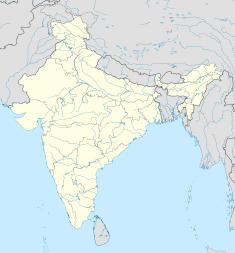





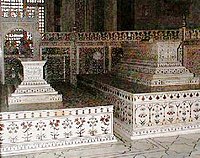





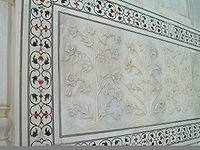
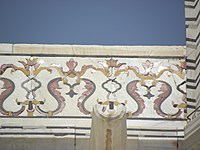



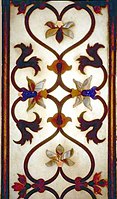
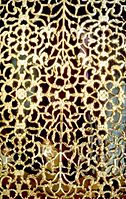



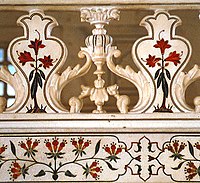


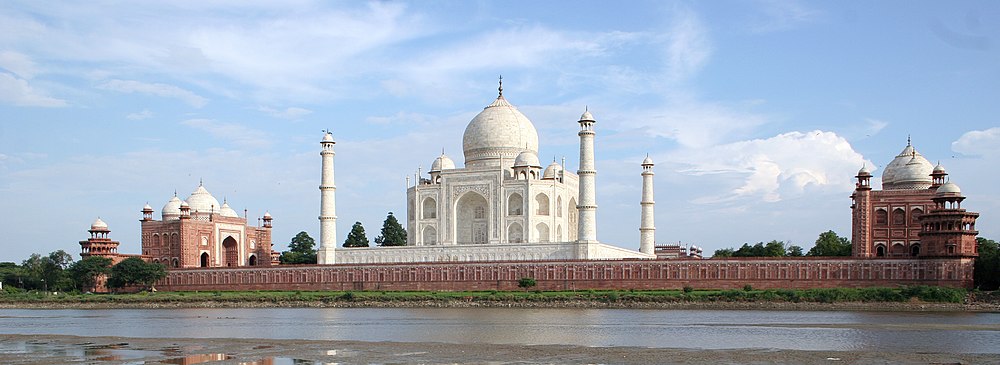


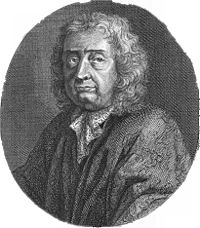


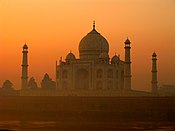

No comments:
Post a Comment